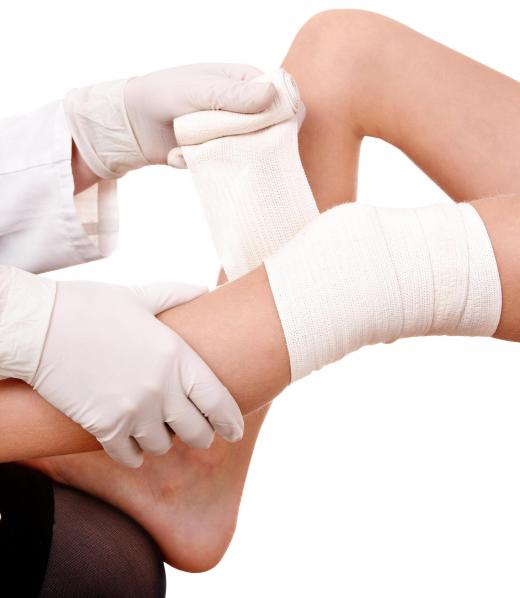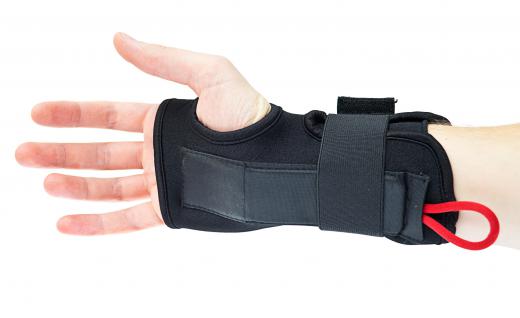When sports injuries occur, there are several types of sports bandages to choose from to aid in the recovery process. Medical professionals apply a sports bandage for injuries to the joints, such as the fingers, wrists, knees, and ankles. For cuts or gashes, trainers place a traditional bandage over the wound and then secure it with athletic tape. Athletes and others may also use a sports bandage for injury prevention as well as rehabilitation.
Athletic wrap is a mainstay for a sports bandage. Wrap is a strong but flexible cloth material used to reduce pain and keep swelling down on joints, especially ankles and wrists. Trainers wash and reuse wraps. Once an ankle is wrapped, it should be secured with athletic tape.

Athletic tape is also a staple in sports bandaging. Athletes often use athletic tape to help support a sprained ankle. If the athlete has a prior history of sprains, he or she may tape up one or both ankles before practice or competitive events. Taping ankles is especially common in high-motion sports such as basketball, football, and soccer. As it can be difficult for an athlete to tape his or her own ankle, a trainer is important to assist in the process.

Widely used for finger sprains, a trainer uses athletic tape to tape the sprained finger to an uninjured one, so the two move in unison. Usually, they apply ice in between sporting events to remove swelling. Once the swelling is down and the finger is fully mobile, a sports bandage will no longer be necessary.
An alternative to athletic tape is an ankle, knee, or wrist brace. This option saves the athlete time, avoiding the wrapping process by simply tying the brace onto the foot or wrist. These braces are commonly made of leather and Velcro and often have metal lining at the ankle for added stabilization. Braces run from lightweight to heavy duty. Athletes with frequent ankle problems wear heavy-duty braces on both ankles.

For a sprained, bruised, or torn knee, a trainer will likely use a knee brace. These are bulkier sports bandages made from a combination of rubber, leather, and Velcro. Trainers may choose traditional cloth wrap to treat minor knee injuries. Athletes use kneepads for injury prevention most commonly in American football, rugby, and baseball. One negative is that a kneepad is a sports bandage that can be bulky and limit maneuverability.
